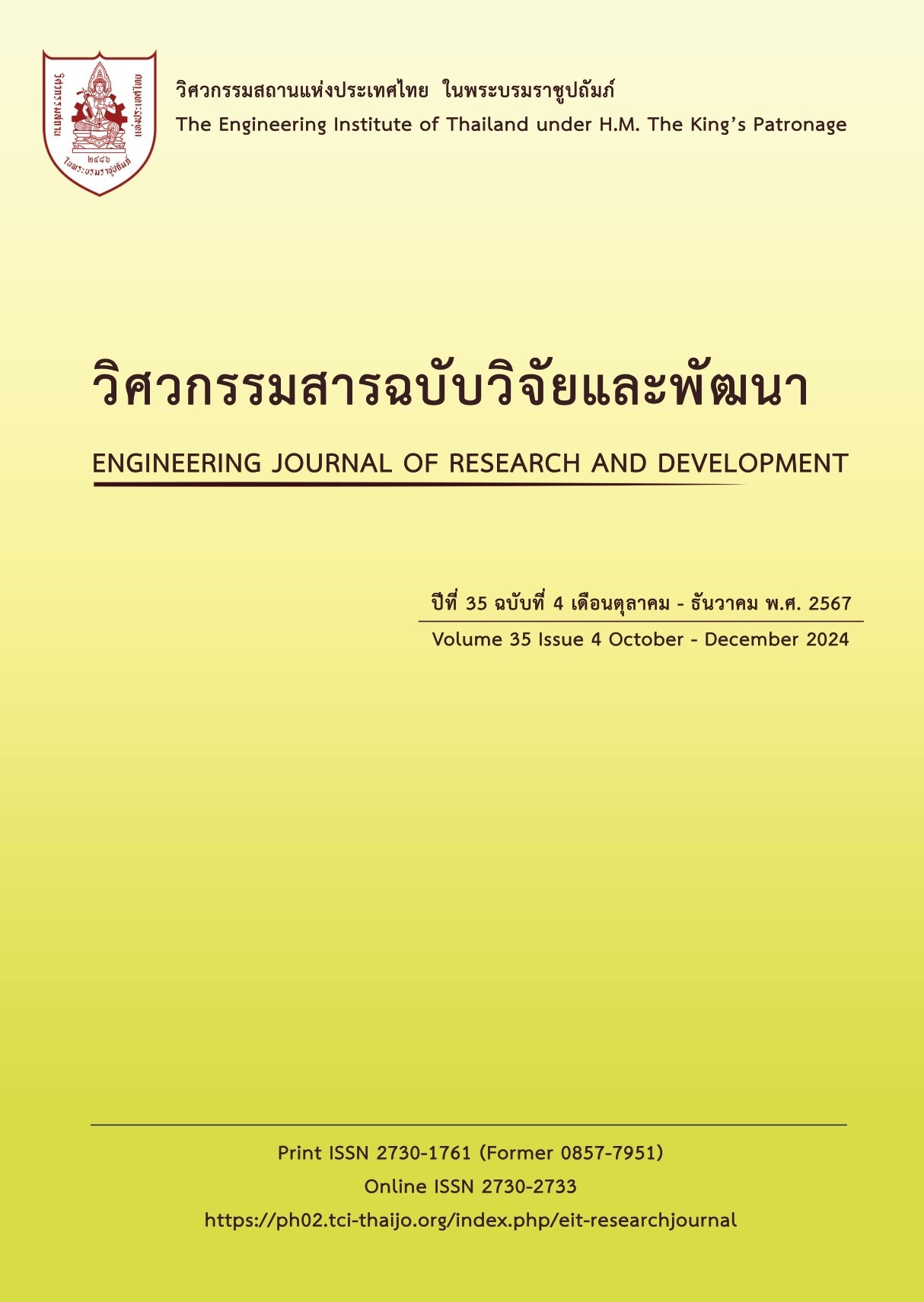APPLICATION OF GEOINFORMATICS AND REMOTE SENSING IN URBAN EXPANSION PREDICTION MODELING FOR COMPARATIVE URBAN ROAD NETWORK PLANNING: A CASE STUDY OF KHON KAEN CITY
Main Article Content
Abstract
The objective of this research is to develop a predictive model for the urban expansion of Khon Kaen city, aimed at supporting analysis and comparison with maps produced from the prioritization of urban road networks included in the urban road network development plan by the Department of Rural Roads. This research integrates urban expansion prediction with three key factors: (1) land use change, (2) road networks, and (3) Digital Elevation Model (DEM) data. The prediction results are evaluated alongside urban road network development data to confirm the suitability of the maps included in the plan. The study area focuses on Khon Kaen Municipality in Khon Kaen Province as a case study. This research employs Landsat satellite images (1999–2019) and Google Maps data to construct a land use change model from 2024 to 2049. Additionally, artificial neural networks are applied to predict future land use trends. When comparing the 2024 simulation with actual conditions, the Kno, Klocation, and Kquantity indices range between 0.6 and 0.8, indicating an acceptable level of accuracy. The model is subsequently used to predict urban expansion and land use for the years 2024, 2029, 2034, 2039, 2044, and 2049. The research findings confirm the alignment of the proposed road network improvements, demonstrating the model's utility in supporting strategic urban planning.
Article Details

This work is licensed under a Creative Commons Attribution-NonCommercial-NoDerivatives 4.0 International License.
The published articles are copyright of the Engineering Journal of Research and Development, The Engineering Institute of Thailand Under H.M. The King's Patronage (EIT).
References
ศูนย์วิจัยและพัฒนาโครงสร้างมูลฐานอย่างยั่งยืน. (2563). รายงานขั้นสุดท้าย (Final Report)โครงการจัดทำแผนพัฒนาทางหลวงชนบทประจำกรม ประจำปีงบประมาณ พ.ศ. 2562 กลุ่มที่ 3 (มหาวิทยาลัยขอนแก่น). มหาวิทยาลัยขอนแก่น: ขอนแก่น
Aryaguna, P. A., & Saputra, A. N. (2020). Land change modeler for predicting land cover change in Banjarmasin City, South Borneo (2014—2022). IOP Conference Series: Earth and Environmental Science, 500, 012002. https://doi.org/10.1088/1755-1315/500/1/012002
Keshtkar, H., & Voigt, W. (2016). A spatiotemporal analysis of landscape change using an integrated Markov chain and cellular automata models. Modeling Earth Systems and Environment, 2(1), 10. https://doi.org/10.1007/s40808-015-0068-4
Pontius, R. G. (2000). Quantification error versus location error in comparison of categorical maps. Photogrammetric Engineering and Remote Sensing, 66, 1011-1016.
Van Ninh, T., Waisurasingha, C. (2018). Land use/cover change and landscape fragmentation analyses in Khon Kaen City, Northeastern Thailand. International Journal of GEOMATE, 15 (47), 201-208.
Mundia, C. N., & Aniya, M. (2005). Analysis of land use/cover changes and urban expansion of Nairobi city using remote sensing and GIS. International Journal of Remote Sensing, 26(13), 2831–2849. https://doi.org/10.1080/01431160500117865
Kamusoko, C., Aniya, M., Adi, B., & Manjoro, M. (2009). Rural sustainability under threat in Zimbabwe – Simulation of future land use/cover changes in the Bindura district based on the Markov-cellular automata model. Applied Geography, 29(3), 435–447. https://doi.org/10.1016/j.apgeog.2008.10.002
Hasan, S., Shi, W., Zhu, X., Abbas, S., & Khan, H. U. A. (2020). Future Simulation of Land Use Changes in Rapidly Urbanizing South China Based on Land Change Modeler and Remote Sensing Data. Sustainability, 12(11), 4350. https://doi.org/10.3390/su12114350
Kamusoko, C. (2022). Optical and SAR Remote Sensing of Urban Areas: A Practical Guide. Springer Singapore. https://doi.org/10.1007/978-981-16-5149-6


